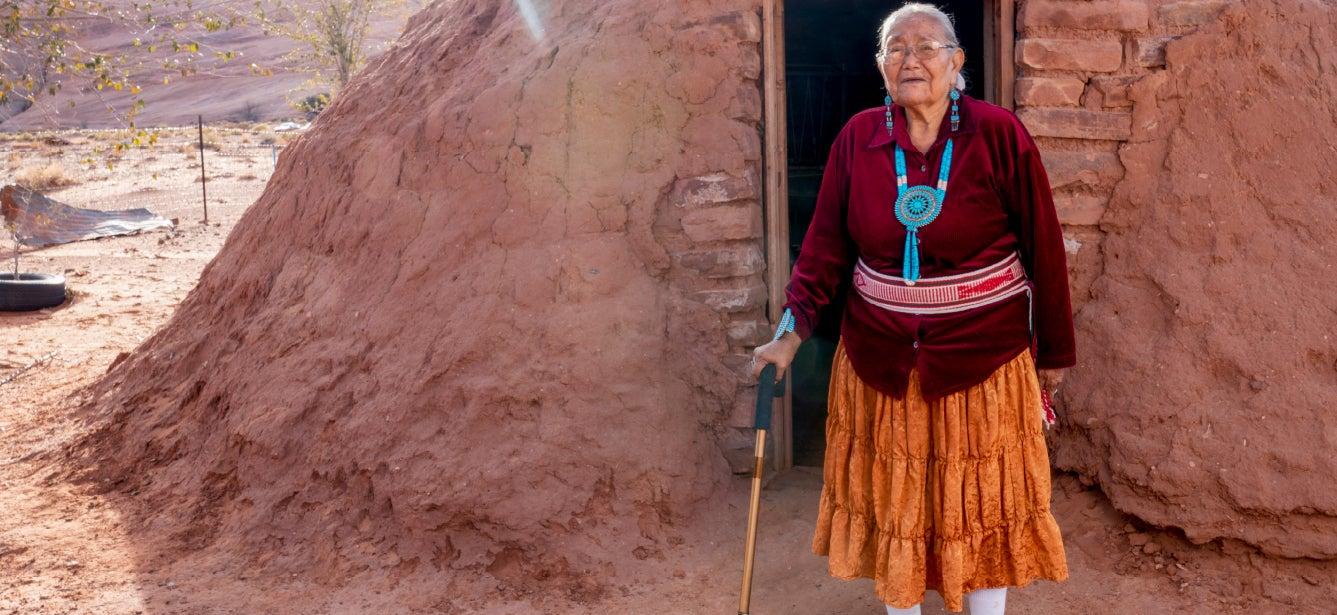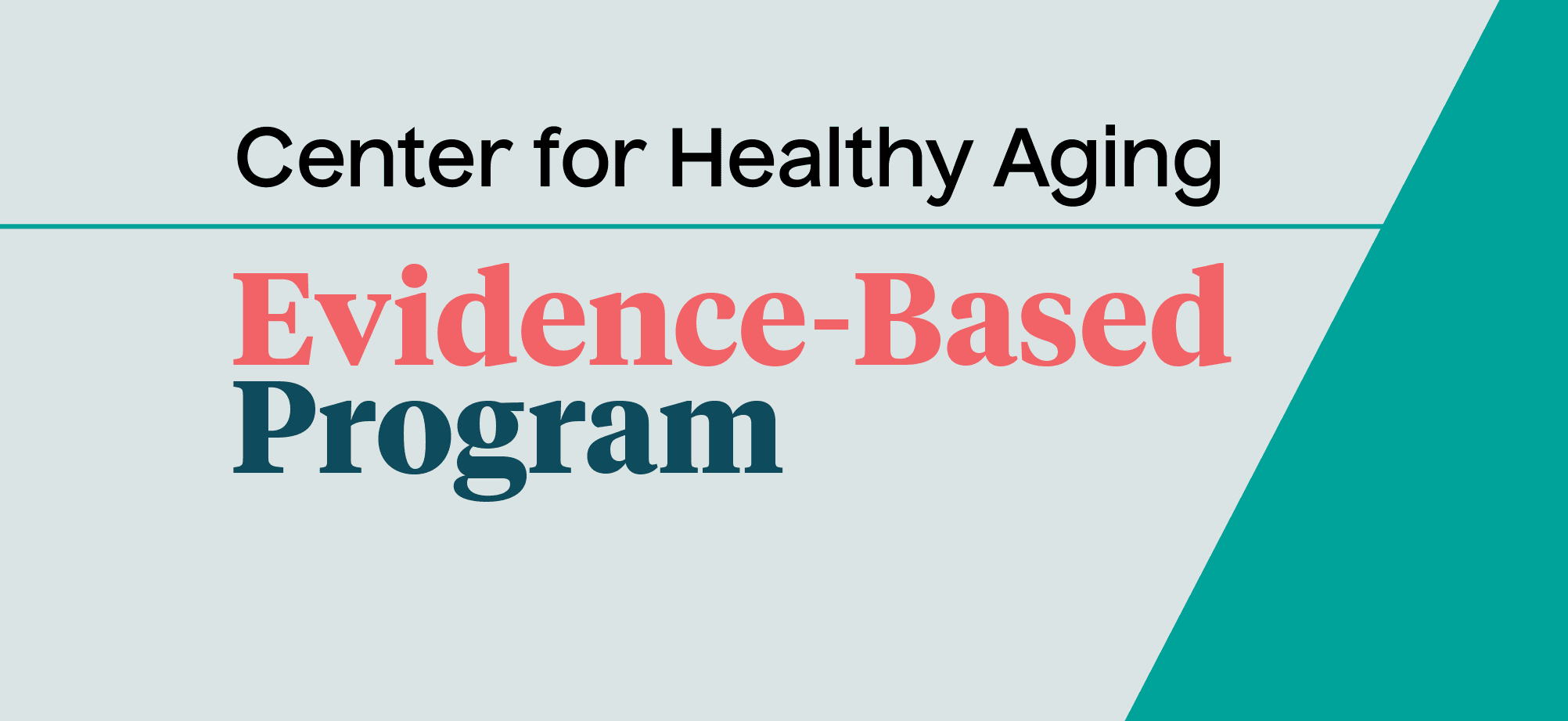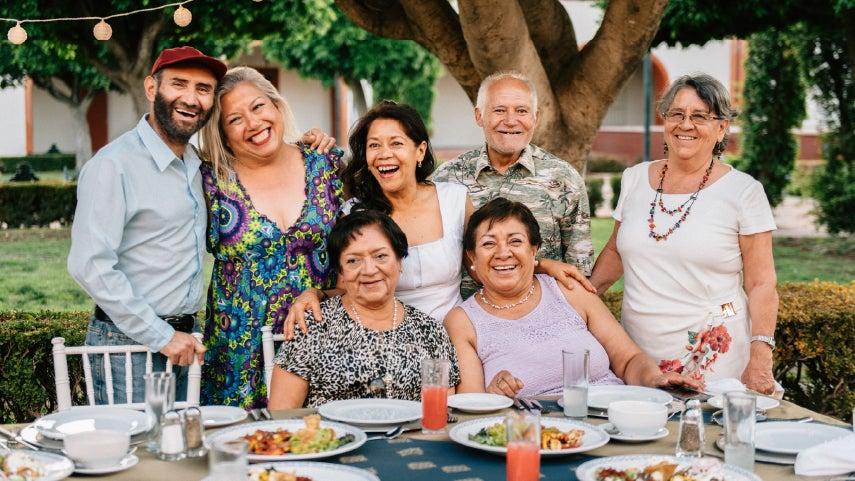How Can Proven Evidence-Based Resources Better Reach Native Elders?
6 min read

Related Topics
Improving the health of older American Indians, Alaska Natives, and Native Hawaiians is a vital concern, and evidence-based interventions can be a powerful step in the right direction.
More than 5 million people live in the United States as members of federally or state-recognized tribes and those representing Native Hawaiians—an estimated population that include 300,000 Native elders 65 and over. Within the next 10 years, this population is expected to double.1 Disturbingly, life expectancy Native Americans is 5.5 years shorter than for all other U.S. races.2
Health disparities, including disproportionate poverty, discrimination, and inadequate federally delivered health care, are driving troubling health trends including higher rates of chronic disease such as diabetes, and falls, contributing to an overall lower quality of life and premature death rates among Native elders.
What are evidence-based programs, and how can they help improve the health of Native elders?
Evidence-Based Programs (EBPs) are trusted, proven, community-based strategies to enhance health and well-being among older populations. These programs can help alleviate the consequences of health disparities among American Indian, Alaska Native, and Native Hawaiian (AI/AN/NH) communities.
Yet these communities are less likely to have access to these interventions—particularly interventions that are culturally competent and respect the traditions, beliefs, practices, and needs of AI/AN/NH elders. The lack of access is further hampered by:
- Longstanding lack of financial resources to support health promotion programs in Native communities
- Failure of many public health programs to build or maintain ongoing engagement or collaboration with Native communities
Tribal leaders and community members are essential allies in promoting EBP adoption among Native communities. Before offering or promoting any of these proven health promotion and disease prevention programs, Tribal elders, EBP administrators, trainers, health educators, and other important stakeholders must ensure they are recognizing, respecting, and incorporating culturally appropriate and necessary considerations for AI/AN/NH community members.
Adopting and sustaining evidence-based programs in Tribal communities
AI/AN/NH communities are vastly diverse, and no single strategy should be applied across the board. While EBPs are inherently curricula-based, many of them leave room for necessary cultural adaptations to ensure they can be delivered in a culturally appropriate, and sensitive, manner.
Furthermore, the most important component of effective and sustained EBPs within tribal communities is a commitment to involving, integrating, and responding to tribal community member and leader input about effective programs. Above all, community leaders and members must be involved in initiating health promotion and disease prevention programs for Native elders and others.
Best practices among Tribal communities offering evidence-based programs
Tribal community member input and buy-in is inherent in successful EBPs, but there are a number of other strategies that can contribute to implementing culturally appropriate and community-centered health promotion programs:3
1. Chronic Disease Self-Management Program (CDSMP)
The CDSMP program is an educational workshop geared toward engaging people who are living with variety of chronic health conditions. Overall, the CDSMP aims to build participants’ confidence in managing their own health and staying engaged in their own lives. In offering CDSMP within tribal communities, program leaders have used several important strategies to promote cultural competence and appropriateness among Native elders. Those strategies include:
- Engaging in self-assessment to ensure tribal voices are represented in program and organization administration and assessing long-term commitment to program sustainability. Specifically, the program should not depend on an individual staff or volunteer for longevity but instead should have a foundation of support within program administration. Listen to Native elders and community-based organizations. Be willing to conduct background research, ask questions, and learn from the community you are serving.
- Identifing and establishing realistic and community-driven goals for the program that recognize programs may be slow-to-start but ensuring community-member input in promoting participation.
- Learning about the tribe’s governance and leadership structure and engaging appropriate health leaders and community-based organizations in your program. Make a concerted effort to identify and involve appropriate individuals as program champions.
2. Wisdom Warriors
Based on the Chronic Disease Self-Management program, Wisdom Warriors was developed by tribal specialists and federal leaders at the Northwest Regional Council in Northwest Washington state. Wisdom Warriors is a program that relies on traditional tribal foods, cultural activities, and deep-rooted traditions to help tribal elders improve their health by better managing chronic illnesses. Developed in 2011, Wisdom Warriors is a tribally centered method of implementing CDSMP. The program demonstrates several important strategies that other programs can incorporate to be culturally relevant while adhering to program integrity:
- Maintaining program fidelity is important, but identify potential areas for flexibility. For example, be aware of/accommodating toward logistical challenges that tribal elders may face, including transportation challenges. Consider using tribally relevant and traditional discussion formats such as a “talking circle” and ,to the extent possible, incorporate relevant language and examples into program curricula.
- Mitigate barriers, incentivize participation, and collaborate with community leaders to promote the program. Ensuring program promotion reflects the community served is a demonstrated way to garner interest from potential participants. Consider developing marketing materials that use culturally relevant pictures and language and speak directly to challenges that community elders are facing as well as engage program participants directly in recruiting efforts as ambassadors.
More tips for building successful evidence-based programs in Native communities
Many of the successful and sustainable EBPs within Native communities share some common strategies. Talk to program administrators to find out how you can adapt your EBPs to meet needs of Native communities. Keep in mind the following tips:
- Seek to build acceptance of programs. It’s important to have regular conversations with communities and seek feedback about what community members want from the program. This can be accomplished by surveying the public to gather feedback and conducting listening sessions.
- Be transparent.Clearly share expectations of participation.
- Offer incentives. A variety of incentives may be helpful for building interest in programs, including offering meals and snacks, providing health-related giveaways like water bottles, or connecting programs with healthy cooking demonstrations.
- Adapt programs to meet participants' needs. Participants may prefer different modes of participation, including attending virtually or in-person, or signing up for a program that’s led 1:1 versus group learning.
- Avoid assumptions. Do your homework and learn about the people, needs, and past health promotion programs.
- Train tribal members to lead classes and engage their communities.
Overall, be willing to learn. Seek to understand. Be sensitive. Be humble. Make connections and build bridges.
This article was written with input from:
- Autumn Campbell, Acting Executive Director, Evidence Based Leadership Collaborative
- Jennie R. Joe, PhD, MPH, MA, Tribe: Dine’Nation(Navajo), Professor Emeriti, Department of Family and Community Medicine, College of Medicine, University of Arizona
- Becky Bendixen,Tribal Program Specialist, Wisdom Warrior T-Trainer
- Roxanne Thomas (Dine’/Navajo & Numu/Paiute), MSW, MSPPM, Program Specialist II, Inter-Tribal Council of Arizona – Area Agency on Aging, Region 8(ITCA-AAA)
- Leslie Tanoue, Title VI Director at ALU LIKE, Inc.
- R. Turner Goins, PhD , Professor, Western Carolina University, College of Health and Human Sciences
Sources
1. National Congress of American Indians. Demographics. Indian Country Demographics. Found on the internet at https://www.ncai.org/about-tribes/demographics
2. Indian Health Services. Disparities. 2019. Found on the internet at https://www.ihs.gov/newsroom/factsheets/disparities/
3. U.S. Substance Abuse and Mental Health Services Administration. Behavioral Health Services for American Indians and Alaska Natives. Found on the internet at https://store.samhsa.gov/sites/default/files/d7/priv/tip_61_aian_full_document_020419_0.pdf



